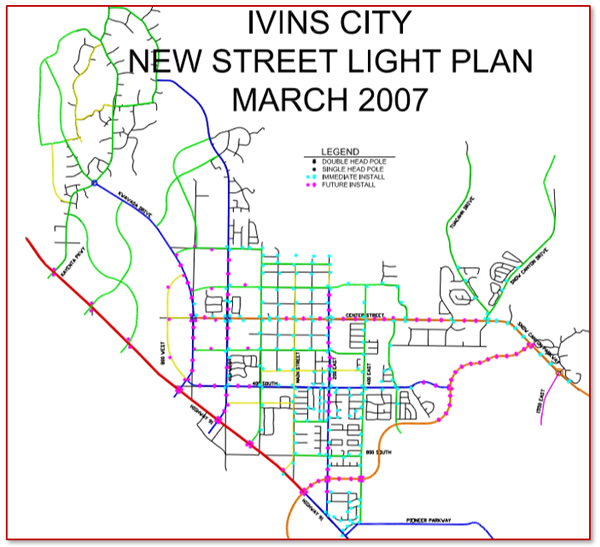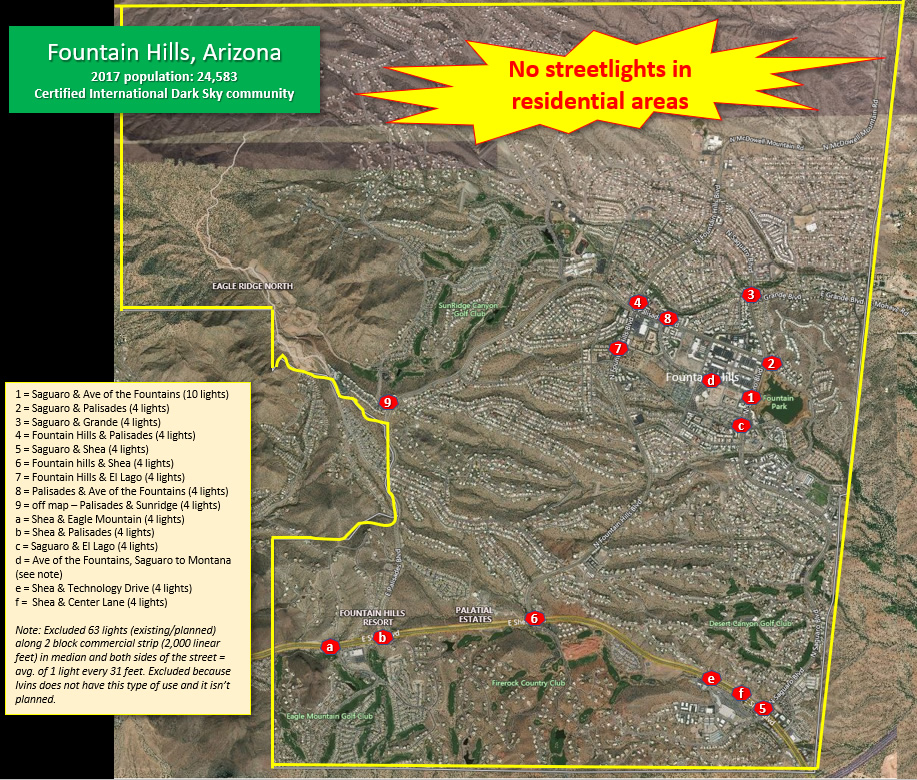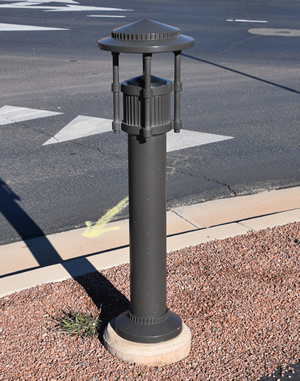Ivins has had a plan in place since 2007 to add new streetlights as the city grew. The map below shows where the lights would be installed over time.
Editor’s note: Please add your comments about our post at the bottom of this article.

Recently, the City Council has been discussing streetlights. The focus of the discussion has been on the type of lights, pole heights, and color temperatures. But the discussions have also made residents aware of the number of new streetlights the city plans to install over the next 5, 10, or 20 years.
It appears that a lot of residents think this is a new direction for the city. Well, it may be new information for them but the city has had this plan for a dozen years.
Some residents want more light. Others want less. Our view is that lighting is important, but we should take time to determine how much lighting, where it is really needed, and what type of lighting is appropriate. So we’ve started to do a little research to see what other cities are doing.
How many street lights do you need?
Fountain Hills Arizona had a population of 24,583 people in 2017. That’s a lot more than the 2019 estimate for Ivins of 9,315. But it is close to what the ultimate build-out of Ivins is projected at. So it is a good comparison to our city’s 2007 plan because that plan is based on build-out at some point in the future.
Fountain Hills is designated as a Dark Sky Community from the International Dark Sky Association. That’s something we are working towards as well.
We took a street tour of the Fountain Hills, using Google Street View. Then we verified our count with the Fountain Hills Public Works Department. There are 62 streetlights in the city located at fifteen intersections. Fourteen of those are busy intersections in predominantly commercial zones with stop lights as well as streetlights.
Based on the city’s 2017 population, that amounts to one streetlight for every 396 residents.

This count does not include bollard lights the city installed on the walkway around the lake in Fountain Park or city lights on a two block outdoor commercial mall.
A Google Earth view of Fountain Hills shows that it has significant commercial development. The streetlights are concentrated in the commercial areas.
How does Ivins compare?
Our survey of Ivins streetlights earlier this year, conducted by driving every street in the city, found 151 streetlights. That excludes bollards (those low pathway lights). There are a few more today.
Based on a 2019 population estimate of 9,315 people in Ivins (from the data in the General Plan), there is one streetlight for every 62 residents.
On a per capita basis, Ivins has 6.4 times more streetlights than Fountain Hills Arizona.
Are they happy?
The following comments are from Marissa Moore, AICP, the Senior Planner for Fountain Hills: “We do have very few streetlights. This was a decision made by the town founders. From what I’ve been told it was two-fold: money, and the residents and original developers wanted to maintain the natural environment since that is a huge factor in the attraction to the town. I have not heard of any proposed installation of lights in the future.”
Mark and Mona Bilden are Fountain Hills residents. Here’s what they think about the lack of streetlights in their city: “We love our dark community and don’t miss street lights at all. We do not feel any concerns about safety. If people want to walk at night they can go to the Fountain and the walking path all around is lit with lights that are short and low to see the sidewalk. It is so wonderful to see all the stars at night!”

They bring up a good point though. Bollards have their place. Fountain Hills has very few sidewalks. Ivins makes a point on connecting neighborhoods with walkways, and lighting them with bollards. We measured the lighting pattern of these bollards last week and found they provide quite a bit of street lighting too.
But what about safety?
We asked her about safety. Marissa said, “As far as safety concerns, I’ve not heard too many. There is a learning curve about what the lighting requirements are, and most find that they are not as restrictive as it may seem. And some people actually want them MORE restrictive.”
Conclusion
Fountain Hills is one example. We just started looking at this issue and found a few more communities with few streetlights, but they were smaller than Ivins today and much smaller than Ivins is projected to be at build-out. But we’ll keep looking, so let us know about cities you are familiar with that have few streetlights.
The Fountain Hills research not only showed us it’s possible to have few streetlights and not impact safety negatively, it also suggests streetlights are more appropriate in dense commercial areas, not residential. that’s clear in the map above. Ivins will see more commercial development, but there’s not much likelihood the city will have any sense commercial area.
Join us
Let us know if this Initiative is important to you, if you are willing to get involved, and what else you think we should be doing to improve, preserve, and protect the night skies in Ivins. We will get back to you as soon as possible.
